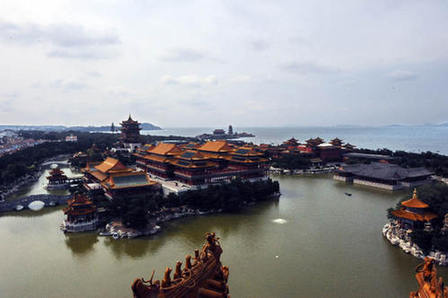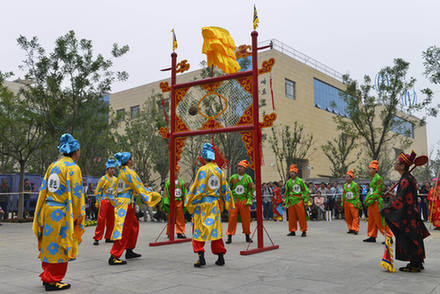Shandong’s Legacy
Revitalize Ancient Culture
Linzi was the capital of the ancient State of Qi (around 1046 – 221 BC) and the birthplace of Qi culture. It served as the capital for over 800 years, from the period when military strategist Jiang Ziya established the State of Qi until it was conquered by the State of Qin, the first centralized empire of China. When I visited Linzi, I saw that most of the city’s ancient architecture was lost; what remains today are just place names. But the local government is taking great steps to fix this problem.
The renowned ancient Chinese historical work Zhan Guo Ce (Strategies of the Warring States) records that the State of Qi extended some 1,000 kilometers. Linzi was a rich city and its residents enjoyed many entertainment activities, such as playing a variety of musical instruments, cock fighting, and Cuju, an archetype of modern football.
Since the 1970s, experts in international sports history have repeatedly pointed out that Cuju, which first appeared over 2,300 years ago in ancient China and was a popular sport in Linzi, is the origin of modern football. On July 15, 2004 at the opening ceremony of the Third International Football Expo in Beijing, FIFA president Sepp Blatter formally announced the origin of soccer – Linzi, Shandong Province.
In 2006, Cuju was included on the first list of China’s national intangible cultural heritage. In order to better pass on the cultural legacy, Linzi launched Cuju classes in all its middle and elementary schools to revive the ancient sport. Moreover, Linzi has taken advantage of its status as the birthplace of “The Beautiful Game” in its city planning and construction by building relevant sculptures and symbolic constructions around the city, trying to elevate the city’s image among local people and tourists.
During the 10th China (Linzi) Qi Culture Festival this year, the organizers invested much time and effort in promoting Cuju, digging deep to get to the essence of Qi culture. “Efforts should be made to expand the Qi culture industrial chain and give full play to the cultural influence of Cuju to build the Qi culture brand and to introduce Linzi to the world,” said Ma Guoqing, an expert in Qi culture and curator of Shandong Linzi Qi Culture Museum.
Sanxian Mountains Scenic Area in Penglai draws inspiration from the painting The Penglai Isle of the Immortals by Qing Dynasty landscape painters Yuan Jiang and Yuan Yao. Xu Hao

The Myth Becomes Reality
According to Shiji (Records of the Historian), there were once three mysterious mountain islands, Penglai, Fangzhang, and Yingzhou, where immortals lived. On September 17, I experienced the real wonderland of the Sanxian Mountains (three mysterious mountains) Scenic Area in Penglai.
Based on the myth of these immortals, the scenic area was launched in 2004 by Penglai Baxianguohai Tourism Co., Ltd. and took three years to build. It brings it to life, transforming the wonderland of people’s fancy into reality.
The sites in the area are fashioned after famous Chinese images: the painting The Penglai Isle of the Immortals by Chinese landscape painters Yuan Jiang and Yuan Yao of the Qing Dynasty (1644-1911), the painting Eighteen Scholars Ascend Yingzhou by Zhao Mengfu, a Chinese painter and calligrapher during the Yuan Dynasty (1271-1368), and a grand building in the Yuanmingyuan (the Old Summer Palace) in Beijing, the Qing imperial park looted and torched by foreign invaders.

